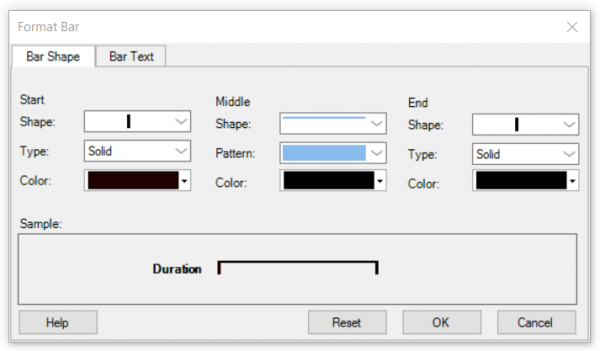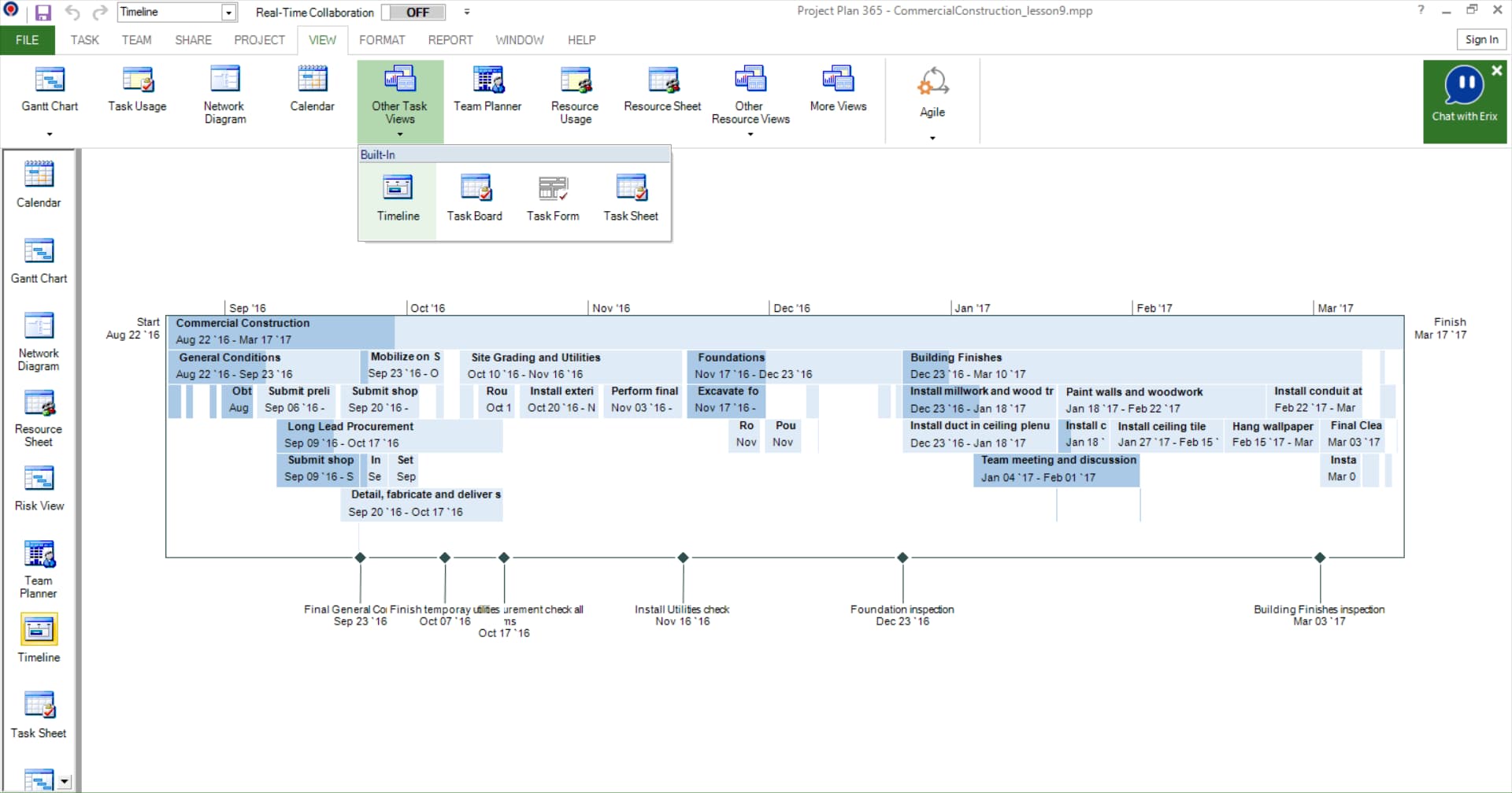

This formatting will override the Task formatting for any critical task because it is below the Task condition in the list. Select a red appearance and select (type) the conditions: Normal, Critical, Active, Not Manually Scheduled. Select the Split in the Name column again, click Insert Row and name this new condition as Critical. Select Row 2, and display the bar From Task Finish to Total Slack.


Next, select the conditions: Normal, Active, Not Manually Scheduled. Name the condition Total Slack, choose a gray color for the appearance, and show the Total Slack text to the right of the taskbar in Text. Select the Split in the Name column, click the Insert Row button, and define a condition to display Total Slack as a separate bar. With the Bar Styles dialog box open, do the following: Select what determines the finish in the To column. Select what determines the start in the From column.Ī taskbar has to have a point of ending. Select the row for a bar in the Row column.Ī taskbar has to have a point of starting. In addition, you can cancel a condition from the list by entering: Not Normal, Not Active, Not Milestone, etc.Ī task can have four taskbars stacked on top of each other in the Gantt Chart. Other conditions are data that can be viewed in existing fields such as Active, Critical, Milestone, and Marked. Some of these conditions are defined by the software, such as Normal, Split, In Progress, or Dependency. The conditions are defined in the Show for … Tasks column. Regarding taskbar appearance, there are 14 points of customization such as the color of the bar, or the symbol at the end of the bar. In the list of conditions, the lower a defined condition is on the list, the higher the priority of that condition. The following selections define each condition: When we see a person at a reunion that we haven’t seen in ten or 20 years, we often remark on physical changes, and then we begin to ask them questions, such as, “So what have you been doing for the last 20 years?” “Still married to Pam?” “Last time I saw you, you were still running marathons?” “Where did your kids go to college?” “Are you thinking of where you are going to retire?” We seem to enjoy looking a how people change over the years, and we typically have reunions every ten years, providing ample time for a change. As we look in the mirror, day after day, over the years we fail to appreciate the inevitable changes that have occurred and are occurring…However, by attending a later reunion (40th or later) the comparisons can be gratifying-or frightening.įor whatever social reason, high school reunions are a standard part of life in the United States for many people. We ponder where we have been versus where we are now. In The Psychology of Reunions, psychologist Larry F. He looked up and again, in a soft, slow but intense mocking voice, replied, “At her resort!” Realizing he was distraught, I tried to change the subject a bit and asked him where the reunion was held in an attempt to get his mind off this beautiful woman he felt he should have married. I heard him mutter in his arms, “I should have married her. At first, I thought he was pulling my leg, but soon realized he was in actual emotional pain. He looked at me for a moment and then said softly, slowly, and with a touch of dreamy intensity, “She was beautiful.” Then he put his head down between his arms folded on his desk and began making prolonged low sounds as if from a source of pain. I asked him, “How did she look?” and paused. One participant responded that he had just attended his 20th the previous weekend.

Teaching a workshop with plant shutdown managers at a Weyerhaeuser facility, I asked the participants, “Has anyone been to a high school reunion?” I wanted to use this idea of a reunion to illustrate part of the idea of a project baseline.


 0 kommentar(er)
0 kommentar(er)
